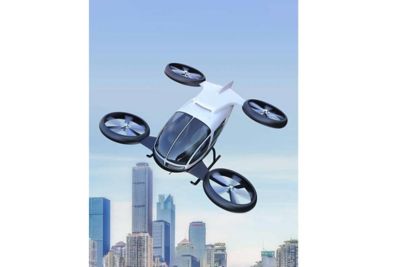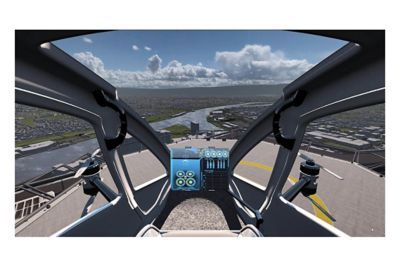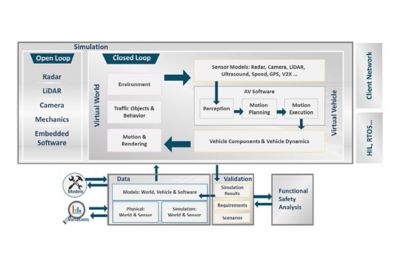-
-
Accédez au logiciel étudiant gratuit
Ansys donne les moyens à la prochaine génération d'ingénieurs
Les étudiants ont accès gratuitement à un logiciel de simulation de classe mondiale.
-
Connectez-vous avec Ansys maintenant !
Concevez votre avenir
Connectez-vous à Ansys pour découvrir comment la simulation peut alimenter votre prochaine percée.
Pays et régions
Espace client
Support
Communautés partenaires
Contacter le service commercial
Pour les États-Unis et le Canada
S'inscrire
Essais gratuits
Produits & Services
Apprendre
À propos d'Ansys
Back
Produits & Services
Back
Apprendre
Ansys donne les moyens à la prochaine génération d'ingénieurs
Les étudiants ont accès gratuitement à un logiciel de simulation de classe mondiale.
Back
À propos d'Ansys
Concevez votre avenir
Connectez-vous à Ansys pour découvrir comment la simulation peut alimenter votre prochaine percée.
Espace client
Support
Communautés partenaires
Contacter le service commercial
Pour les États-Unis et le Canada
S'inscrire
Essais gratuits
ANSYS BLOG
September 18, 2019
Self-Flying Planes Are Here; Autonomous Aircraft Are the Future
I find it interesting how people get more comfortable with a concept, like self-flying planes, the more they understand the level of autonomy in modern planes.
You could consider modern planes as self-flying, in that they can autonomously execute a flight plan created by pilots. However, these aircraft cannot think for themselves; they will follow the flight plan until it’s changed
For example, when pilots take off the seat-belt sign, chances are you’re in a self-flying plane. With this information — and given the number of successful flights every day — the concept of autonomous aircraft starts to sound like a safe, feasible innovation.
In commercial aircraft, pilots input the flight plan into the flight management system (FMS) when the aircraft is still on the ground. The pilots usually activate this autopilot a few minutes after takeoff. The autopilot typically remains engaged until a few minutes before landing.

We may have self-flying planes, but autonomous aircraft are in the pipeline.
However, this isn’t always the case. In low visibility, if the aircraft and runway are certified for autonomous landings, the plane can guide itself to a safe, smooth landing.
Pilots are there to manage changes and risky situations like diversions, turbulence or emergency scenarios. They are a safety feature within the cockpit, monitoring what is happening on the plane. For instance, it’s the pilots’ job to ensure the autopilot stays on course; if it fails, they must take over.
So, can we say that the aviation industry has beaten the automotive industry in the race for autonomy? Not quite. Just like the automotive industry, there are different autonomous vehicle classifications.
So, how close are we to safe, fully autonomous aircraft? Let’s shine a light on the often-invisible autonomous innovations in the aerospace industry.
The Difference Between Autonomous Aircraft and Self-Flying Planes
Flights are highly automated, but self-flying planes still require two experienced, well- trained pilots.
Modern autopilot systems are designed to execute inputs received from the pilot or flight director computer. The autopilot keeps a plane on a predefined path at cruising altitudes. It can even perform climbs, descents and turns as instructed. You can imagine that the autopilot is following an invisible highway called an airway.
When at cruising altitudes, planes are unlikely to encounter birds or other obstacles. Therefore, there is no need to give the autopilot freedom of movement.

In urban settings, autonomous aircraft will need to continuously perceive threats, plan paths around them and execute those plans.
In the future, aircraft will not be partially automated, they will be fully autonomous — eliminating the need for a pilot.
One of the main applications of autonomous aircraft is for urban air mobility. In megacities these autonomous flying taxis — so to speak — can revolutionize personal travel and shipping by reducing traffic and increasing safety. However, designing these autonomous aircraft to operate in such a busy environment poses engineering problems that are much more complex than the ones solved by the invention of modern autopilot systems.
To operate in an urban setting, autonomous aircraft will need to safely perform three very important functions, beyond flying a predefined route:
- Taking off and landing without a runway
- Seeking out obstacles (like vehicles, buildings and birds)
- Altering course to manage unpredictable situations (like wind gusts, engine failures and obstacles)
This level of autonomy requires sensors, embedded software and artificial intelligence (AI) systems that continuously perceive risky situations, plan a safe path of motion and execute those motions. These systems will also need to be smart enough to decipher the difference between buildings, birds and other aircraft in any environment or weather condition. Designing such a system requires a lot of engineering development that includes simulation, software- and hardware-in-the-loop testing.
What Will the Future of Aviation and Autonomous Aircraft Look Like?
The first step toward autonomous aircraft in the future will be to move to single pilot operations.
There have already been rumblings to introduce single pilot operations for freight and short-range flights.
Urban air mobility flights will also require a single pilot or full autonomy.
The speed and reliability of fully autonomous systems will make them better equipped than humans to handle urban skies that are filled with obstacles.

A closed-loop simulation of a single-pilot air taxi
Additionally, these urban vehicles will be small, light and capable of vertical takeoff and landing (VTOL). As a result, they might be able to carry four passengers. Short-range flights between local airports could accommodate 10 to 14 people. Therefore, companies can’t devote space or weight to two pilots and hope to break even, financially speaking.
Beyond autonomous features, urban aircraft will be very different from modern aircraft, requiring:
- Electric propulsion to keep urban emissions down
- Lightweight frames/loads to meet maneuverability and efficiency requirements
- Quiet mechanisms to keep urban noise to a minimum
- Comfortable experiences to break into the urban mobility market
Many established and startup companies are now in a race to deliver these urban autonomous vehicles.
How to Get from Self-Flying Planes to Autonomous Aircraft
Sensors will need a lot of development to make autonomous aircraft a reality. You can’t just stick a camera on an aircraft and expect it to be able to see everything in an urban environment. Much like the human eye, cameras would be useless in certain conditions, like fog and glare.
Therefore, engineers will need to develop radar, lidar, cameras, sound and infrared sensors to perceive the environment. They will then need to combine the information from these devices, using sensor fusion methodologies, to get an accurate picture of the environment for every flight and weather condition.
The perceived information will then need to be communicated to the aircraft’s embedded software and AI systems so they can plan out a safe flight. These systems will also need to be developed and tested to ensure functional safety. In other words, engineers need to ensure that the autonomous aircraft will make the safest decision in every conceivable situation. Without simulation these tests could take decades or longer.

An autonomous vehicle simulation environment
In order to make autonomous vehicles a reality, Ansys has launched Ansys Autonomy, which offers comprehensive simulation and software development tools to design and test autonomous vehicles virtually. Ansys Autonomy can help engineers design and test:
- Sensors
- Embedded software
- Vehicle platforms
- Functional safety
To learn how, read the white paper: Solving for Safety in Autonomous Aircraft Systems.
In urban settings, autonomous aircraft will need to continuously perceive threats, plan paths around them and execute those plans.